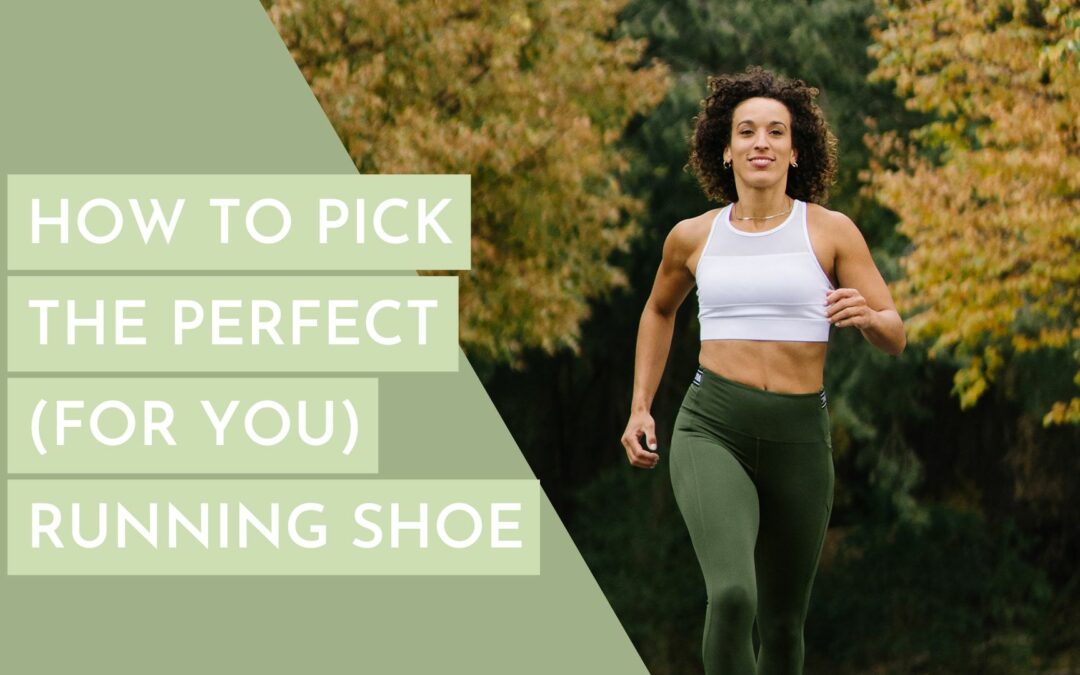They say that a journey of a thousand miles begins with a single step, and the first step in your running journey is finding the right pair of shoes. Walk into your local shoe store, and you’ll be greeted with entire walls of running shoes, each slightly different from their neighbors. Look at enough brightly colored and sleekly designed shoes, which will likely blur together before you get your head around them or your foot inside them. In the end, many people choose shoes based on how they look.
While fashion sense is certainly one consideration, it isn’t necessarily the most important when you’ve got the road in front of you. Just like finding the perfect compression in your preferred legging, spending a little time in the buying stage with performance and comfort in mind could shave seconds off your running time and hours off your recovery.
1. Try Shoes Out In Person
You can occasionally get away with an ill-fitting pair of shoes by limiting your activities or wearing an extra pair of socks, but a snug fit is critical when running. Buying your running shoes online isn’t recommended unless the retailer has an accommodating return or exchange policy.
Likewise, grabbing a pair off the rack without trying them on is a dangerous endeavor. Sizes fluctuate slightly from manufacturer to manufacturer and from shoe to shoe. And your shoe size can change throughout your life, even into adulthood. The best way to avoid a bad fit is to try shoes on before you take them home. Just like your ZYIA Rep knows activewear and can guide you to the perfect pair of running shorts, a shoe expert can guide you to the ideal shoe for your running style and feet.
2. Shop For Shoes In The Evening
Your feet aren’t made of stone (even if they feel like it sometimes) and go through ordinary changes throughout the day. It’s common for feet to swell throughout the day due to activity and gravity. Typically, swelling stops around 4:00 p.m., when it levels out until you lie down for the evening and your feet recover.
The change isn’t dramatic; you’ve likely never even noticed it, but it’s enough to make your shoes too tight even if they fit perfectly in the morning. To that end, it’s best to shop for running shoes in the early evening to avoid a tight squeeze down the line.
3. Wear Good Socks, and Take Them with You
Your goal is to replicate the experience of running as closely as possible, in the store or with a representative. Because your other goal is to make running as comfortable as possible, you should run with a sweat-wicking, breathable running sock with some cushion and stretch. Once you’ve found your socks, take them along to shop for shoes.
Additionally, if you typically run wearing insoles for additional support, that will also change the fit of your new running shoes. Test drive prospective shoes the same way you’ll wear them at home or on the trail to make sure they’re genuinely a good fit.
4. Consider Where You’re Running
Think of your shoes as a mode of transportation. Like any other vehicle, some are good for certain activities, and some are good for others. You wouldn’t take the family sedan rock crawling, and you shouldn’t take the wrong shoe running.
Running half an hour on a treadmill a few times a week differs from hitting an off-road running trail. Considering how your shoe’s exterior interacts with the pavement is just as important as how its interior interacts with your foot.
Trail running might call for a shoe with more robust tread and strategic reinforcements to better handle uneven terrain. By contrast, a lightweight racing shoe trims the fat to reduce your load and shave seconds off your finishing time. They’re good for going fast but don’t provide the protection you want for daily training. First, know where you want to go so you can choose the shoes that will take you there. The right shoes paired with the right ZYIA shorts or leggings designed for how you like to run will make every run more enjoyable.
5. Analyze Your Foot And Gait
Just as everyone’s body is unique, so are different running shoes. There’s not one perfect shoe for everyone. In addition to the spectrum of support, from the subtlety of barefoot running shoes to the robustness of trail runners, shoes vary in width, arch support, and gait correction.
Gait typically falls into one of three categories: you can run right down the middle of the foot (that’s considered neutral and is most desirable), or you can favor the inside of the foot (overpronation) or the outside (supination). In either of the latter cases, a specialized shoe helps correct deviations in your gait and gives you a nice straight roll-through by providing additional support where you need it. A few slow laps for a running specialist or in front of a mirror can give insight.
6. Run, Don’t Walk, To The Nearest Running Store
There’s a lot to consider when picking your next (or your first) pair of running shoes but you needn’t remember it all yourself. The experts at a local running store can look at your feet and gait, talk to you about your running goals, and provide options for the most suitable shoes.
Pro tip: if you have old running shoes, take them with you. Running store experts may be able to analyze your gait based on the wear patterns on your shoes and recommend a better solution. The most important thing is to take the first step. You can’t even course correct if you’re not on the trail.

